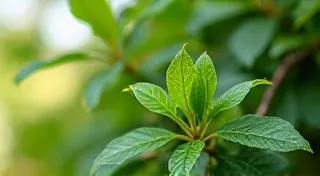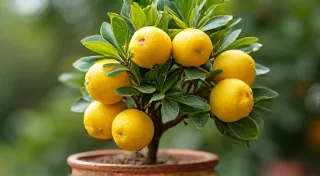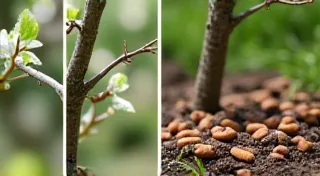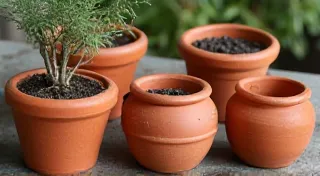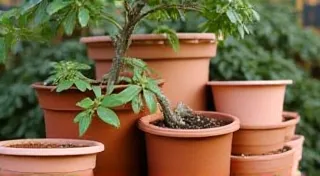Watering Wisdom: Keeping Your Dwarf Fruit Trees Hydrated in Containers
Growing dwarf fruit trees in containers is a wonderfully rewarding experience, allowing you to enjoy fresh, homegrown fruit even with limited space. However, mastering the art of watering is absolutely crucial to their success. Unlike trees planted in the ground, container-grown dwarf fruit trees rely entirely on you for their hydration, making proper watering techniques even more vital. This guide will cover everything you need to know about watering your container dwarf fruit trees, from frequency and method to recognizing potential problems.
Why Container Watering is Different
The container environment significantly impacts how quickly water evaporates from the soil. Factors like pot size, material (terracotta dries faster than plastic), weather conditions (sun and wind), and the type of potting mix all play a role. The smaller the container, the faster the water will disappear, and the more frequently you’ll need to water. Choosing the right pot is the first step; consider a self-watering container for added convenience, but remember even those need monitoring.
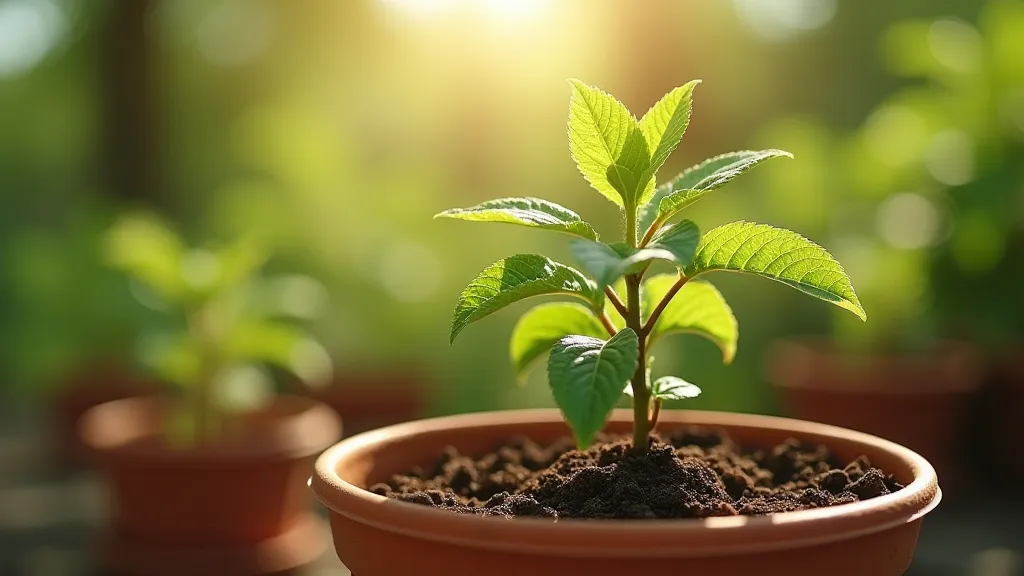
Watering Frequency: It's Not a One-Size-Fits-All Approach
There's no magic number for how often to water. Instead, you need to observe your trees and adjust accordingly. As a general guideline:
- During the growing season (spring and summer): Most dwarf fruit trees will need watering 2-4 times per week, and sometimes even daily in hot, dry weather. This is when they are actively growing and putting on new leaves and fruit.
- During dormancy (fall and winter): Water less frequently, typically once every 2-4 weeks, allowing the soil to dry out more between waterings. Remember to also adjust your fertilization schedule during this period.
Here's how to tell if your tree needs water:
- The Finger Test: Stick your finger about an inch or two into the soil. If it feels dry, it’s time to water. If it's moist, wait.
- Weight of the Pot: Get to know the weight of your container when it’s fully watered. A lighter pot indicates a drier soil. Over time, you’ll become incredibly attuned to this nuance.
- Leaf Appearance: Wilting or drooping leaves can be a sign of underwatering, but be careful – they can also indicate overwatering (see below). Consistent and proper care extends to more than just watering; you’ll want to consider pruning your trees regularly to maximize fruit yield, and that's best done in conjunction with attentive observation. Learning to properly pruning dwarf fruit trees is key to a healthy and productive tree.
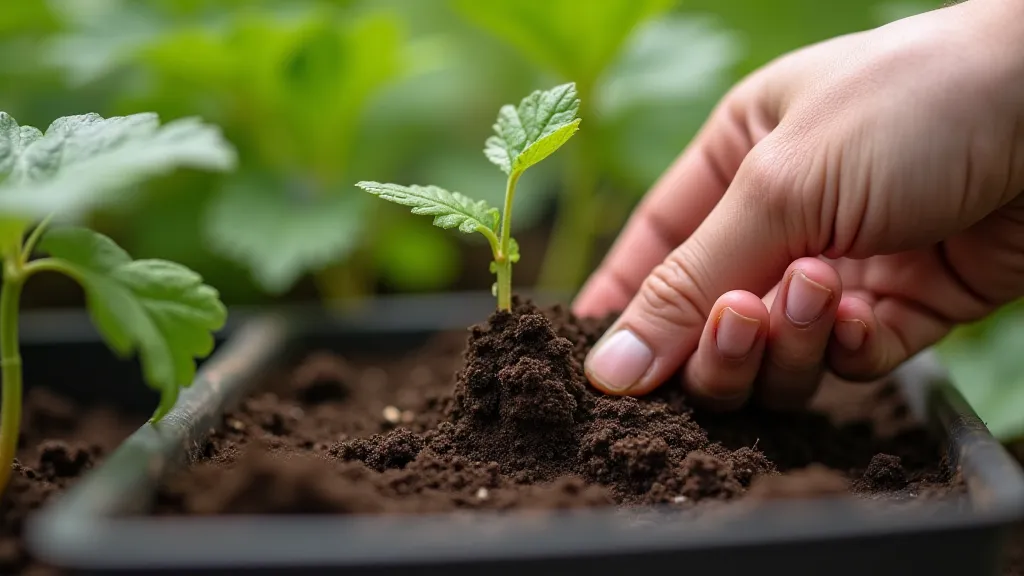
Watering Method: Getting It Right
How you water is just as important as how often. Here’s the best approach:
- Water Slowly and Thoroughly: Don't just sprinkle the surface. Water slowly and deeply until water drains out of the drainage holes. This ensures the entire root ball is moistened. Consider the needs of different varieties; some trees, like dwarf citrus trees, may require slightly different watering approaches. You can find helpful information about the best dwarf citrus trees for container gardening, including specific watering tips.
- Water at the Base of the Tree: Avoid wetting the foliage, as this can encourage fungal diseases.
- Use Room Temperature Water: Extremely cold or hot water can shock the roots.
- Consider Using a Watering Can or Hose with a Gentle Sprinkler Head: This provides a more even distribution of water.
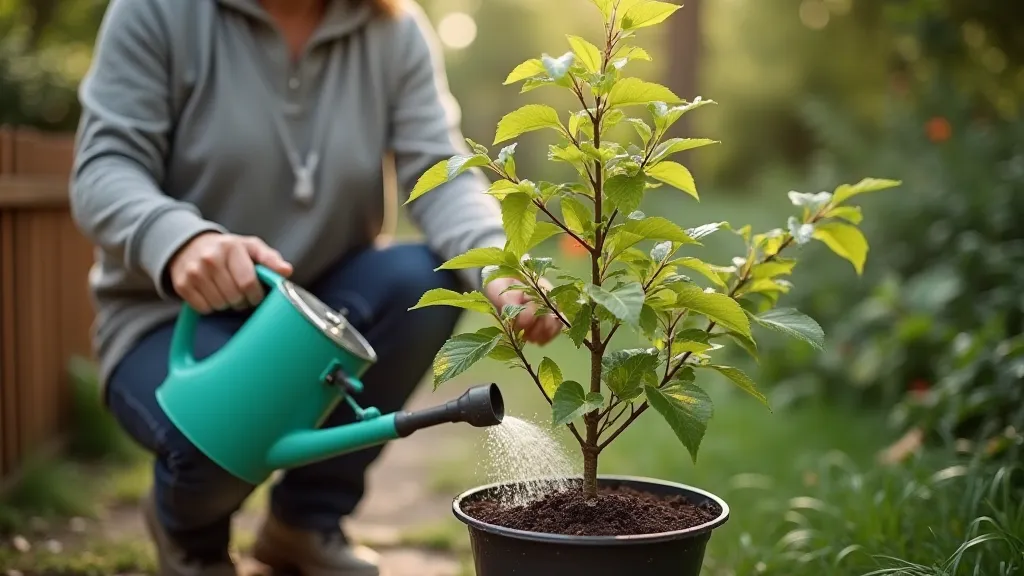
Recognizing Problems: Overwatering vs. Underwatering
It's easy to make mistakes when it comes to watering. Here’s how to tell the difference between overwatering and underwatering:
Underwatering:
- Wilting leaves
- Dry, brittle leaves
- Leaf drop
- Stunted growth
- Soil pulling away from the sides of the pot
- Premature leaf color change – often yellowing or browning around the edges.
Overwatering:
- Yellowing leaves
- Soft, mushy roots (check by gently removing the tree from the pot) - a very concerning sign!
- Standing water on the soil surface
- Fungal gnats or other pests - a direct result of the consistently moist conditions.
- Leaf drop
- A musty, unpleasant odor emanating from the soil.

Potting Mix and Container Selection: Setting the Foundation
The potting mix you choose is absolutely critical. Standard garden soil is too heavy and compacts easily in containers, hindering drainage and air circulation. A well-draining potting mix specifically formulated for container gardening is essential. Look for mixes containing peat moss, perlite, and vermiculite. The container itself also plays a role. Terracotta pots are porous, allowing for better air circulation but also faster water loss. Plastic pots retain moisture longer. Choosing the right combination depends on your climate and watering habits. Furthermore, as your tree matures, it may eventually need to be transplanted to a larger container to accommodate its growing root system.
Seasonal Adjustments and Long-Term Care
Watering needs fluctuate dramatically with the seasons. During the hot summer months, you might need to water daily, while during the cooler winter months, watering frequency can be significantly reduced. Pay close attention to your tree's appearance and adjust accordingly. Beyond watering, regular fertilization is also vital for healthy growth and abundant fruit production. Remember, proper care extends beyond just watering; harvesting and storing your bounty properly contributes to the overall success and enjoyment of your dwarf fruit trees.
Troubleshooting Common Watering Issues
Cloudy, stagnant water in the drainage holes: This usually indicates overwatering and poor drainage. Consider repotting the tree with a fresh potting mix and ensuring the drainage holes aren't blocked. You might also need to improve the airflow around the container.
Salt buildup on the soil surface: This is a sign of mineral buildup from fertilizers and can hinder water absorption. Leach the soil by watering thoroughly until water runs freely from the drainage holes. This helps flush out excess salts.
Root rot: A severe case of overwatering can lead to root rot, characterized by dark, mushy roots. While early intervention can sometimes save the tree, it often requires significant repotting and careful monitoring.
Tips for Success
- Mulch the Soil Surface: A thin layer of organic mulch (like shredded bark) can help retain moisture and suppress weeds.
- Choose the Right Potting Mix: Use a well-draining potting mix specifically formulated for container gardening.
- Adjust Watering with the Seasons: Monitor your trees closely and adjust your watering schedule based on weather conditions and the tree’s growth stage.
- Don't Be Afraid to Adjust: Every tree is different! What works for one might not work for another. Observe, adapt, and learn from your experiences.
- Consider Automatic Watering Systems: For those with busy schedules or frequent travel, automated drip irrigation systems can provide consistent watering and reduce the risk of neglect.
- Regularly Inspect the Roots: During repotting, take a moment to inspect the root system. Healthy roots are typically white or light-colored. Dark, mushy roots indicate a problem.
By following these watering wisdom tips, you’re well on your way to enjoying a bountiful harvest from your container-grown dwarf fruit trees!
